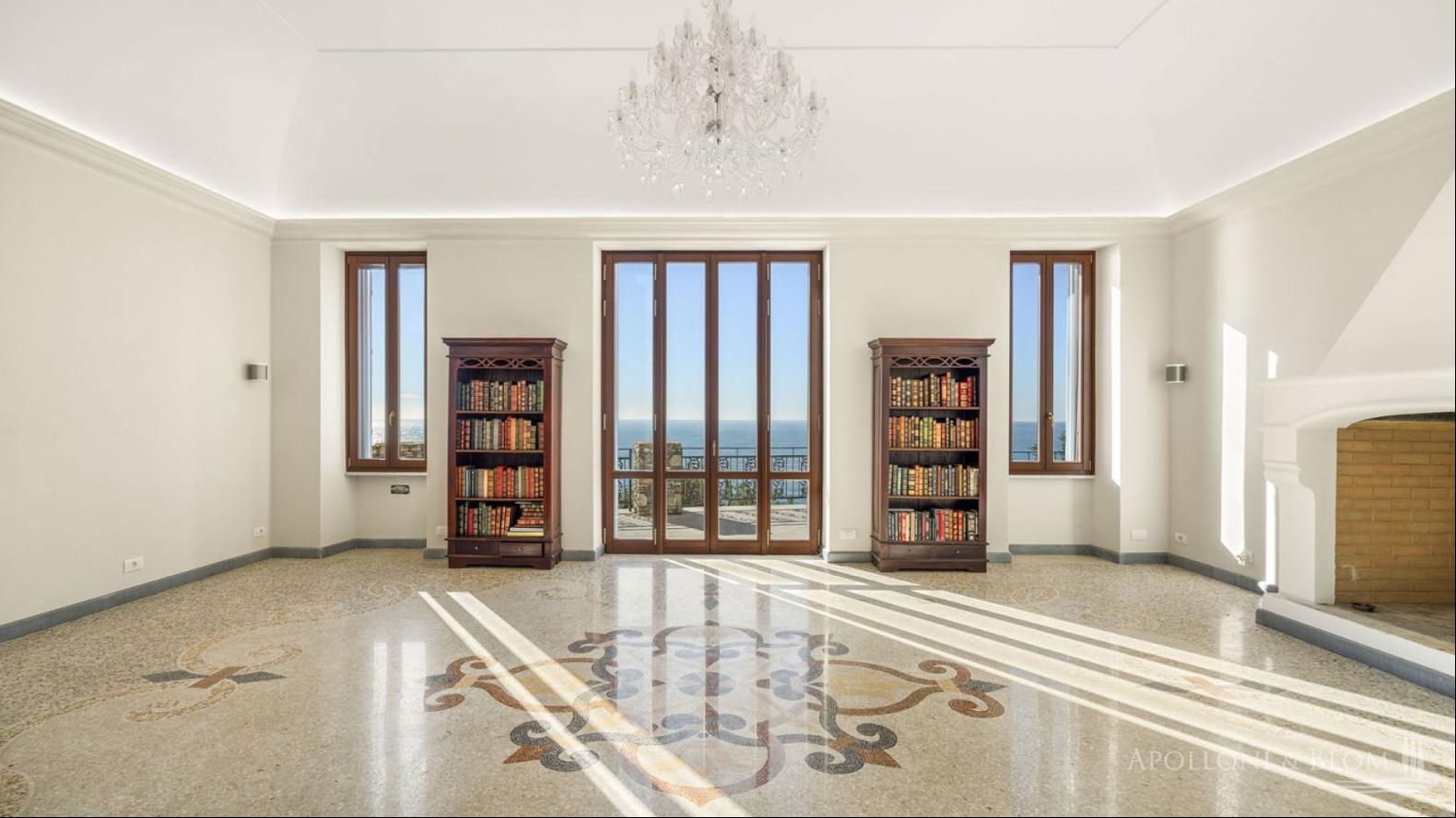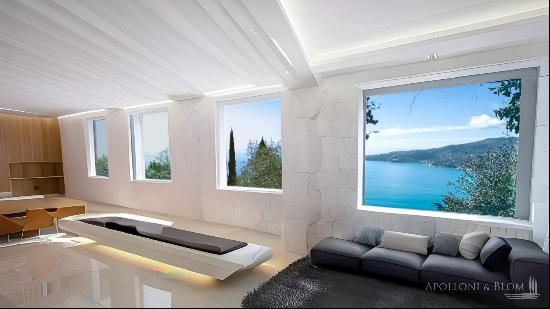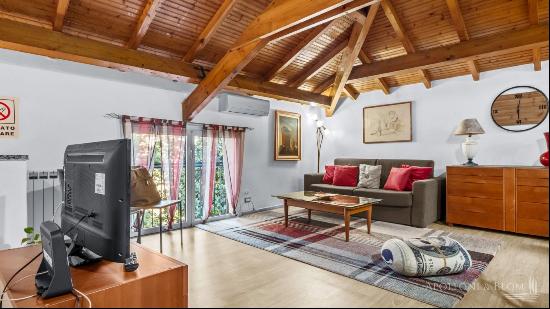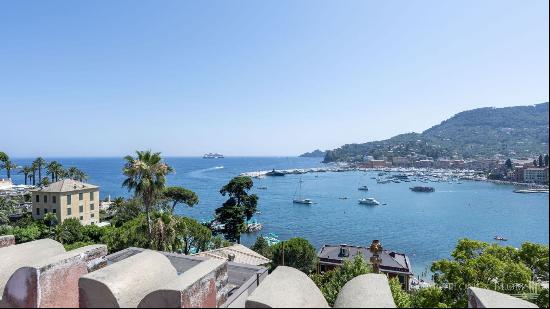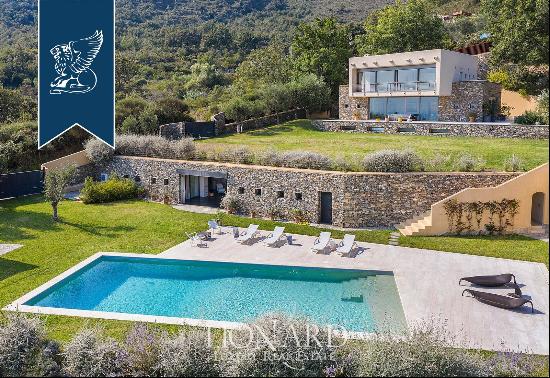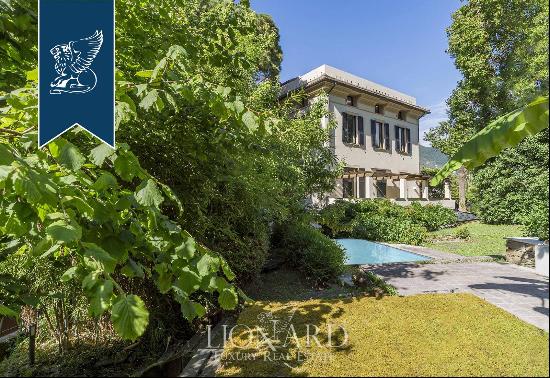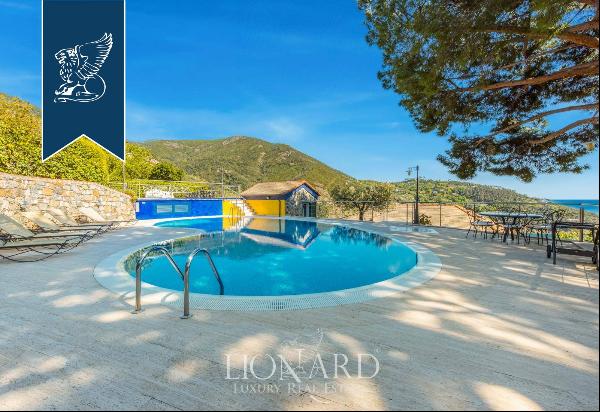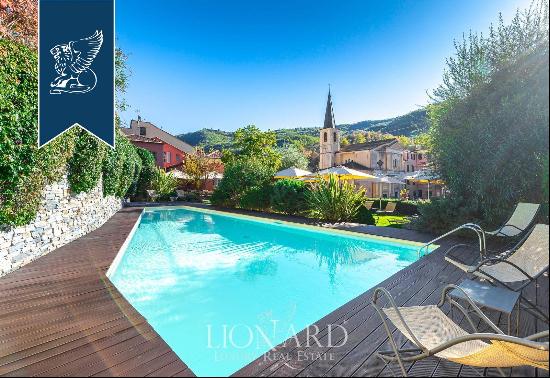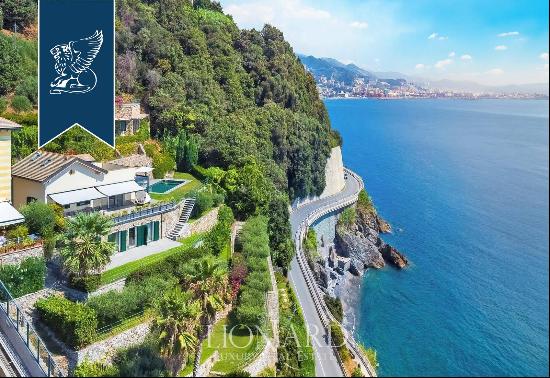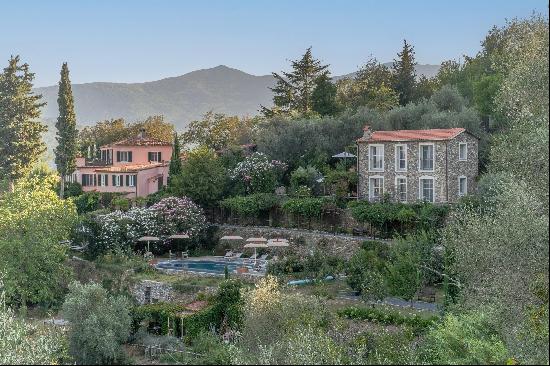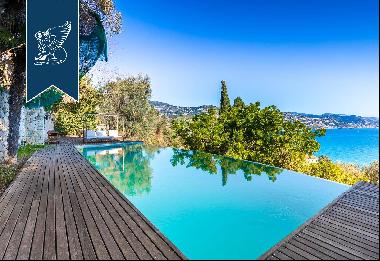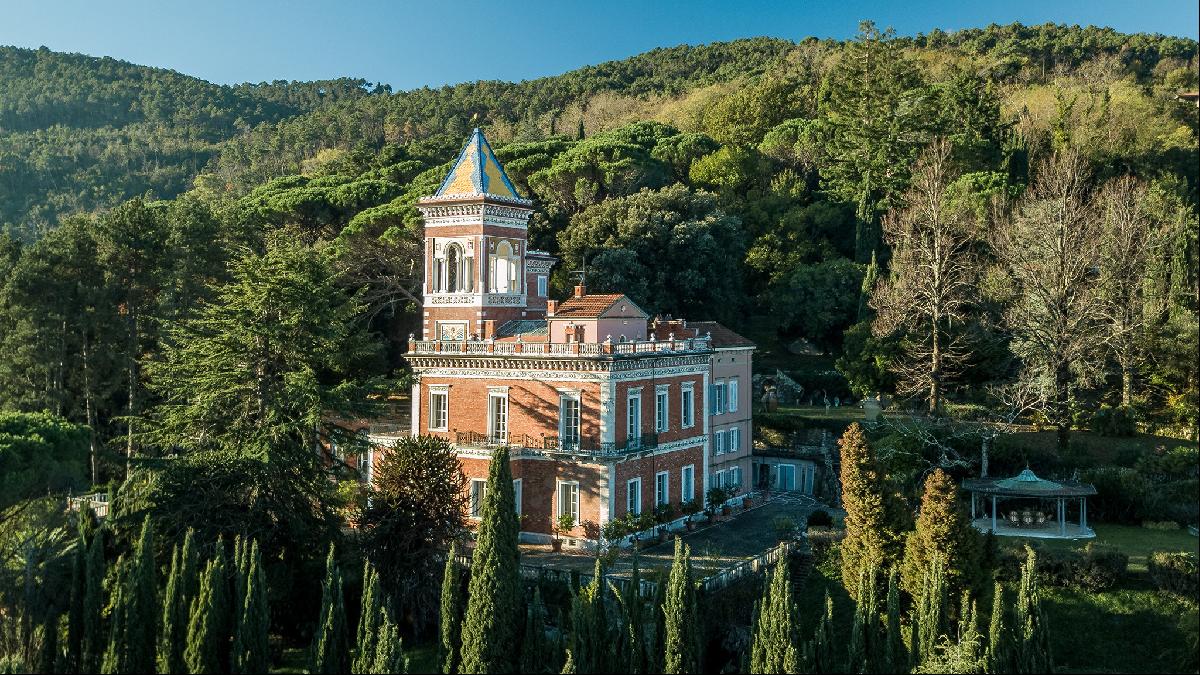
By Kate Youde
It is only fitting that marble can be found in every corner of Villa dell’Angelo. The Italian property looks across the mouth of the Magra river and Ligurian Sea to the quarries of the Apuan Alps, from where the world-renowned white Carrara marble is extracted.
It was here that Bernardo Fabbricotti, who commissioned the house at the end of the 19th century, plied his trade. Back then, his family’s marble business dominated the world trade in the material.
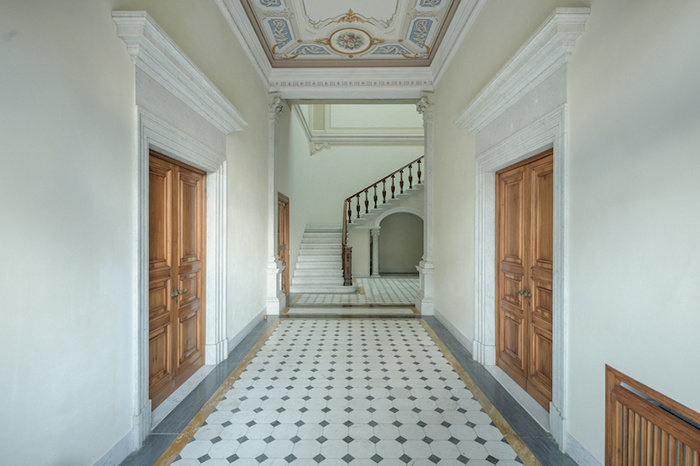
Today, this legacy can be seen in the house’s entrance hall of original white Carrara marble columns, flooring and staircase.
More marble columns frame the far-reaching views from the loggia in the property’s eye-catching tower. “We all used to love the view of the Apuan Alps and the unforgettable sunsets,” says current owner Simona Bigagli, who grew up there. The house is on the market for €12mn.
“During the winter months, the sun would set behind the Alps and the red light would bathe the mountains. It was extraordinary.”
Built in the Liberty style (the Italian version of Art Nouveau that takes its name from the London department store), the villa lies on the edge of the village of Bocca di Magra, a 10-minute drive from Liguria’s border with Tuscany. It retains the original Liberty style skylight in the entrance hall and the Fabbricotti coat of arms — made of course from marble — on its facade.

By the time Simona’s father, Giorgio Bigagli, and his brother, Tito, bought the house in the 1970s, it had been used both as a hotel and an orphanage run by nuns. The brothers spent 15 years restoring the property, putting their own stamp on it by adding more stonework, including a spiral staircase made from pink Portuguese marble.
They split the house into two homes in which to raise their respective families. These provide a total of eight bedrooms.
It is the property's location on the river and next to the sea that attracted the brothers, says Simona. During her childhood the family had a yacht moored at the quay outside the house and took weekend boat trips.

She says the Gulf of La Spezia, better known as the Gulf of Poets thanks to the writers it attracted, including English Romantics Lord Byron and Percy Bysshe Shelley, is 15 minutes away by boat. Shelley drowned in a boating accident in the sea there in 1822.
There was plenty to keep the brothers’ children entertained at home. Simona’s cousin Roberta Bigagli has fond memories of summers spent camping in the 4.45-acre grounds of the “fairytale-like villa”, which include olive groves, another loggia and a gazebo.
“We used to spend entire days in the garden imagining a hidden treasure somewhere,” says Roberta. “We also loved having picnics in the forest under the leaves of the huge sequoia.”
Apart from occasional visits, the house has not been used since Giorgio died in 2017. The cousins are selling the property because it “needs to be lived in”, says Simona.

She says the new owner can expect “moments of complete relaxation and tranquillity”. “Holidays [here] will be particularly enjoyable thanks to the proximity of the house to famous destinations such as Forte dei Marmi [a coastal resort known for its beaches], the Italian Riviera and the Cinque Terre, which is easily accessible by sea,” she says.
No doubt Simona will miss that panoramic view of the Apuan Alps, also visible from the terrace where she kicked off her wedding celebrations with aperitivi in the summer of 1992. She held the reception in the garden, with her favourite photographs of the day taken in the tower loggia.
“Whenever I go up in the tower I can breathe better,” she says.
Photography: Knight Frank


